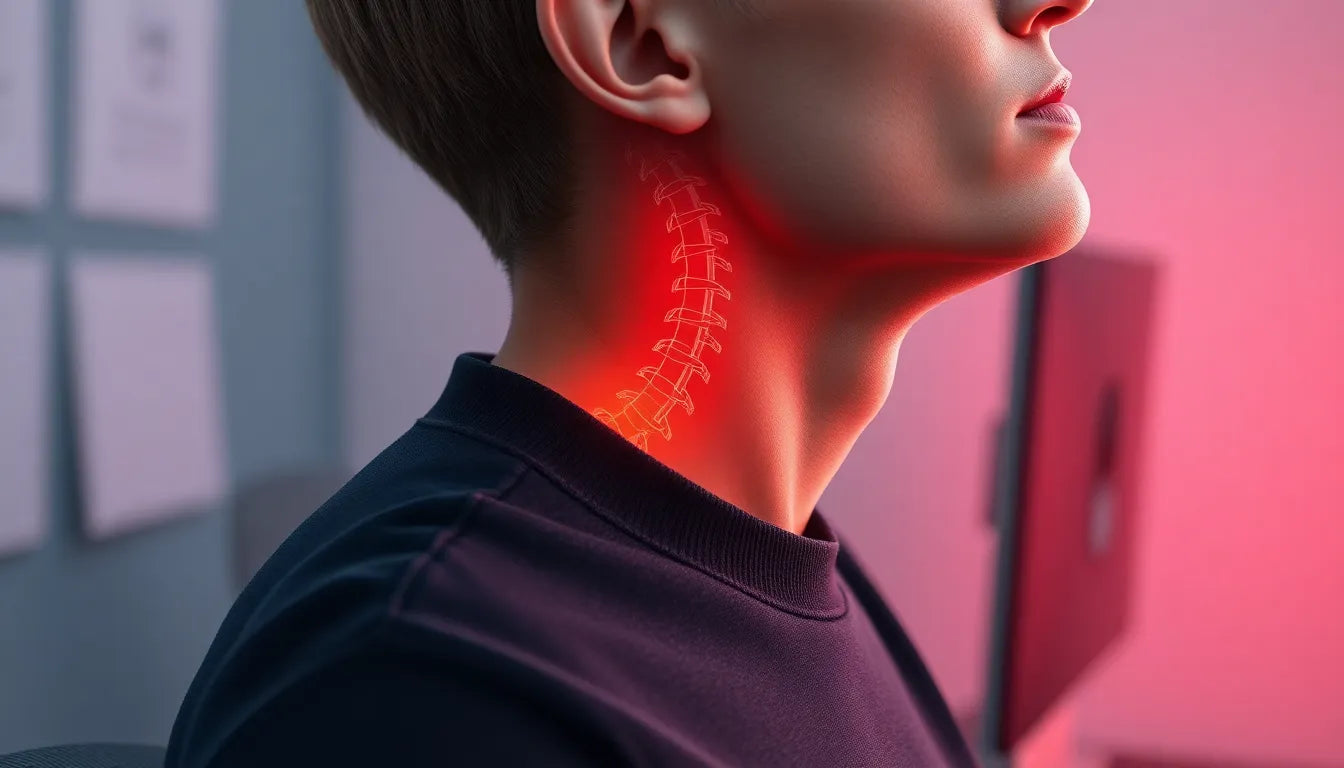When your beloved canine companion starts showing signs of discomfort, it can be a distressing experience for any pet owner. One common yet serious condition that affects many dogs is a herniated disc, often linked to intervertebral disc disease (IVDD). This condition occurs when the cushioning discs between the vertebrae of the spinal column bulge or burst into the spinal cord space. It can lead to significant pain and mobility issues, impacting your dog's quality of life.
understanding herniated discs in dogs
Intervertebral disc disease is prevalent in dogs, especially in certain breeds prone to spinal issues, such as dachshunds, French bulldogs, and other short-legged breeds. The condition can manifest in various ways, but common symptoms pet owners should be vigilant about include difficulty walking, noticeable pain when touched, and a reluctance to jump or climb stairs. These symptoms often indicate that your dog is suffering from a herniated disc, which requires immediate attention to prevent further deterioration.
The emotional toll on pet owners can be significant, as watching a cherished pet struggle with pain is heart-wrenching. Additionally, the financial impact of treating a herniated disc can be considerable, especially if surgery is required. However, understanding the condition and knowing the symptoms to watch for can help in seeking timely treatment, potentially reducing costs and emotional stress.
importance of timely treatment
Early diagnosis and treatment are crucial for dogs with herniated discs. The sooner the condition is identified, the better the chances of a full recovery. Quick intervention can prevent the progression of symptoms and improve the overall prognosis. This blog post aims to explore innovative and cost-effective treatment options available for dogs suffering from this condition.
While traditional treatments like surgery and medication are common, recent advancements have introduced new possibilities that may offer hope to pet owners. These innovative solutions not only aim to alleviate the physical discomfort of dogs but also address the financial concerns of their owners. By understanding these options, you can make informed decisions that best suit your dog's needs and your circumstances.
Stay tuned as we delve deeper into these treatment options, from groundbreaking non-surgical approaches to tried-and-true methods, and learn how they can help your furry friend regain their vitality and zest for life.
innovative herniated disc treatments for dogs
When it comes to treating herniated discs in dogs, recent advancements have opened up new avenues that go beyond traditional surgical methods. One of the most promising developments is the use of non-surgical enzyme injections. This innovative approach, pioneered by researchers at Texas A&M University, offers a cost-effective alternative to surgery. The enzyme injections work by dissolving the material causing the disc to bulge, thereby alleviating pressure on the spinal cord and reducing pain.
The benefits of this treatment are significant. Not only is it about six times less expensive than surgical interventions, but it also provides a viable option for pet owners who may not be able to afford surgery. The accessibility of enzyme injections could potentially broaden the spectrum of care for dogs suffering from intervertebral disc disease, making it an attractive option for those seeking less invasive treatments.
traditional treatment approaches
While innovative treatments are gaining traction, traditional methods remain a cornerstone in the management of herniated discs in dogs. Surgical interventions, in particular, have shown high success rates. Clinics like Southeast Veterinary Neurology and Nashville Vet Specialists emphasize that timely surgery can result in recovery rates as high as 95% for dogs that retain some function in their limbs prior to the procedure. The consensus among veterinary specialists is that "surgery sooner rather than later" can lead to the best outcomes, underscoring the importance of early intervention.
For cases where surgery is not immediately necessary, conservative management may be the first line of treatment. This approach typically involves a combination of medication to manage pain, enforced rest to prevent further injury, and physiotherapy to aid recovery. The UK-based veterinary charity PDSA provides a comprehensive guide on conservative management, including practical tips for home care. These might involve helping your dog with toileting and ensuring they avoid activities that could exacerbate their condition.
specialized clinics and emergency care
Access to specialized clinics and emergency care is crucial for dogs with herniated discs. Facilities like Southeast Veterinary Neurology offer 24-hour emergency services, highlighting the critical nature of timely intervention. Their emphasis on immediate care aligns with the broader veterinary recommendation that each hour can be crucial to a dog's recovery chances.
Consultations with veterinary neurologists can provide a detailed assessment and tailored treatment plan, ensuring that each dog receives the care best suited to their specific condition. These specialists are equipped to handle complex cases and can offer insights into whether surgical or non-surgical options are more appropriate.
considerations for high-risk breeds
Certain breeds are more predisposed to developing herniated discs, with dachshunds and French bulldogs being among the most affected. Owners of these breeds should be particularly vigilant in monitoring for symptoms and seeking veterinary advice at the first sign of trouble. Preventive measures, such as maintaining a healthy weight and avoiding activities that strain the back, can be crucial in minimizing the risk of intervertebral disc disease.
In conclusion, while traditional surgical and conservative treatments remain effective, the advent of enzyme injections offers a promising new option for managing herniated discs in dogs. By exploring these innovative solutions and understanding the importance of timely intervention and specialized care, pet owners can make informed decisions that enhance their dog's quality of life and potentially reduce the financial burden of treatment.
Preventive Measures and Ergonomic Support for Dogs with Herniated Discs
In addition to treatment, preventive measures and ergonomic support are crucial in managing herniated discs in dogs. While much of the current content focuses on treatment options, there's a notable gap in discussions about prevention and supportive care. Implementing ergonomic aids can significantly contribute to both the prevention and management of intervertebral disc disease (IVDD) in dogs.
One of the most effective preventive strategies is providing supportive bedding. High-quality, orthopedic dog beds can help alleviate pressure on the spine, offering comfort and support that can prevent further disc issues. Similarly, ergonomic feeding solutions, such as elevated food and water bowls, reduce neck and back strain during meals, promoting better posture and reducing the risk of exacerbating spinal problems.
For dogs recovering from a herniated disc, mobility aids like harnesses or slings can be invaluable. These tools assist in supporting the dog's weight, reducing the risk of additional injury during recovery. By investing in these ergonomic solutions, pet owners can enhance their dog's quality of life and potentially prevent future health issues.

Lumbar support belt
Lower back belt for support, ideal for relief during daily activities or recovery.
Recovery and Rehabilitation: Enhancing the Healing Process
Post-treatment recovery is a critical phase in a dog's journey back to health. Rehabilitation aids play a significant role during this period, facilitating a smoother and more effective recovery. Incorporating ergonomic products into the recovery plan can enhance the healing process, offering both physical support and comfort.
Physiotherapy, often recommended as part of the recovery process, can be complemented by using tools like balance discs and ramps, which aid in rebuilding strength and mobility. These aids not only support physical recovery but also boost the dog's confidence as they regain their ability to move freely.
Overall, ergonomic solutions are not just about comfort; they are an integral part of a holistic approach to treatment and recovery. By focusing on supportive care, pet owners can help their dogs recover more efficiently while also minimizing the risk of future complications.

Women's Posture Shirt™ - Nude
Patented shirt that activates muscle support and improves posture.
Cost-Conscious Treatment Support
The economic aspect of treating herniated discs in dogs is a significant concern for many pet owners. While the initial costs of ergonomic aids may seem high, they can ultimately lead to savings by preventing complications and reducing the need for more intensive medical interventions. By investing in supportive care tools, owners can manage costs effectively while ensuring their pets receive the best possible care.
Additionally, these tools can complement both conservative and surgical treatments, offering a comprehensive approach to managing IVDD. By reducing strain on the spine and assisting in recovery, ergonomic aids can play a pivotal role in improving outcomes and reducing the overall financial burden of treatment.
Frequently Asked Questions
What are the symptoms of a herniated disc in dogs?
Symptoms include back pain, difficulty walking, and reluctance to move. If you notice these signs, seek veterinary advice promptly.
How effective is enzyme injection treatment compared to surgery?
Enzyme injections offer a less invasive and more affordable alternative with promising results, though effectiveness can vary based on the individual case.
Can all dogs with herniated discs be treated without surgery?
Treatment depends on the severity of the condition; consult a veterinarian for a tailored approach to your dog's needs.
What breeds are most at risk for herniated discs?
Breeds like dachshunds and French bulldogs are particularly prone to IVDD, requiring careful monitoring and preventive care.
How can I prevent my dog from developing a herniated disc?
Use ergonomic aids, maintain a healthy weight, and avoid activities that strain the back to reduce the risk of herniated discs.
What should I do if I suspect my dog has a herniated disc?
Seek immediate veterinary consultation to explore treatment options and ensure the best possible outcome for your pet.
Källor
- Texas A&M University (2023). "New Hope for Dogs with Herniated Discs."
- Southeast Veterinary Neurology (2023). "Dog Herniated Disc."
- Nashville Vet Specialists (2023). "Thoracolumbar Intervertebral Disc Disease."
- VOMC Veterinary (2023). "Intervertebral Disc Disease (IVDD) Surgery."
- Cornell University (2023). "Intervertebral Disc Disease."
- BluePearl Vet (2023). "Herniated Discs in Pets: Pickle's Story of Recovery."
- Berkeley Dog & Cat Hospital (2023). "IVDD Surgery for Dogs."
- StudyPages (2023). "A Potential New Treatment for Acute Disc Herniation in Small Breed Dogs."


















